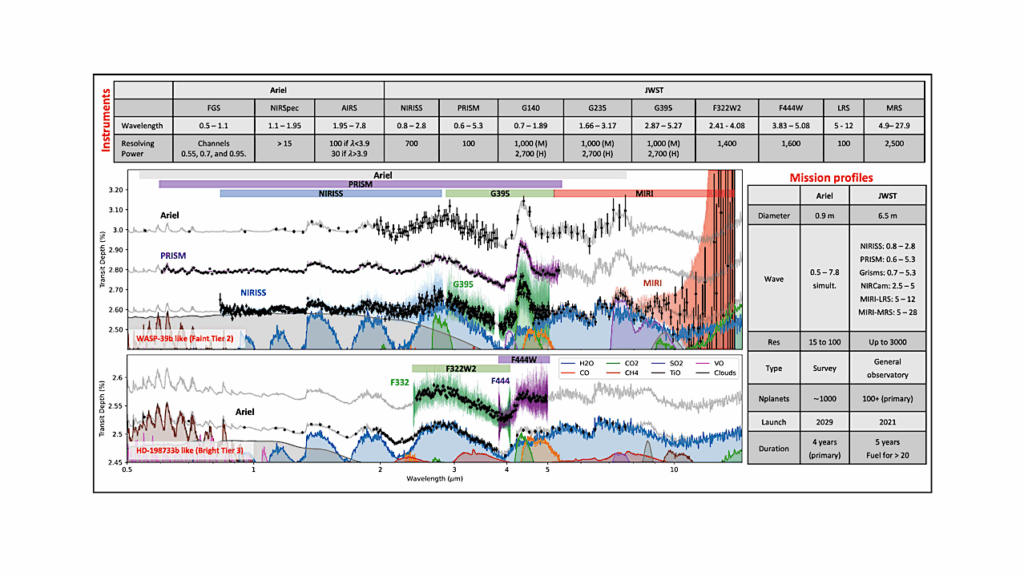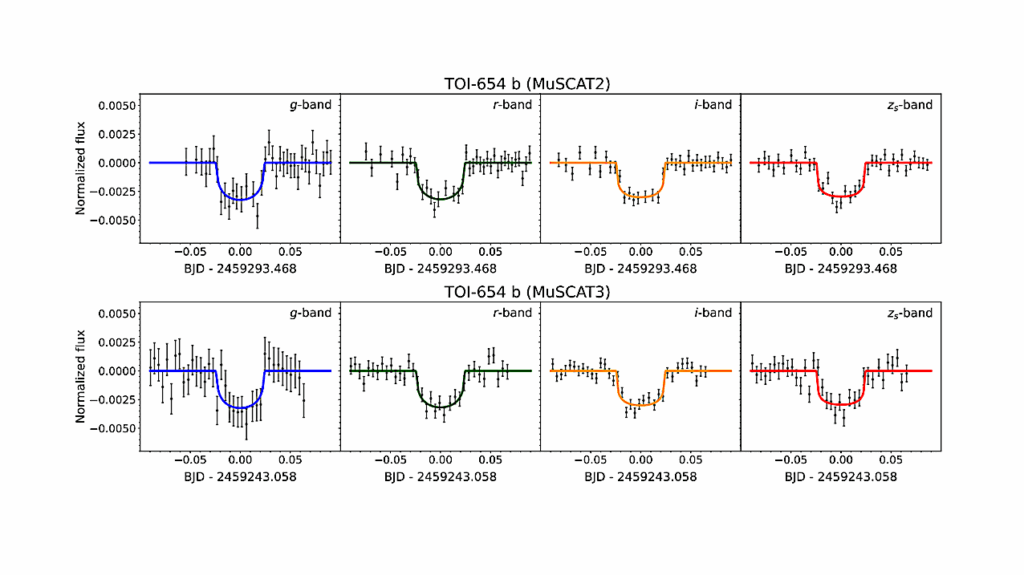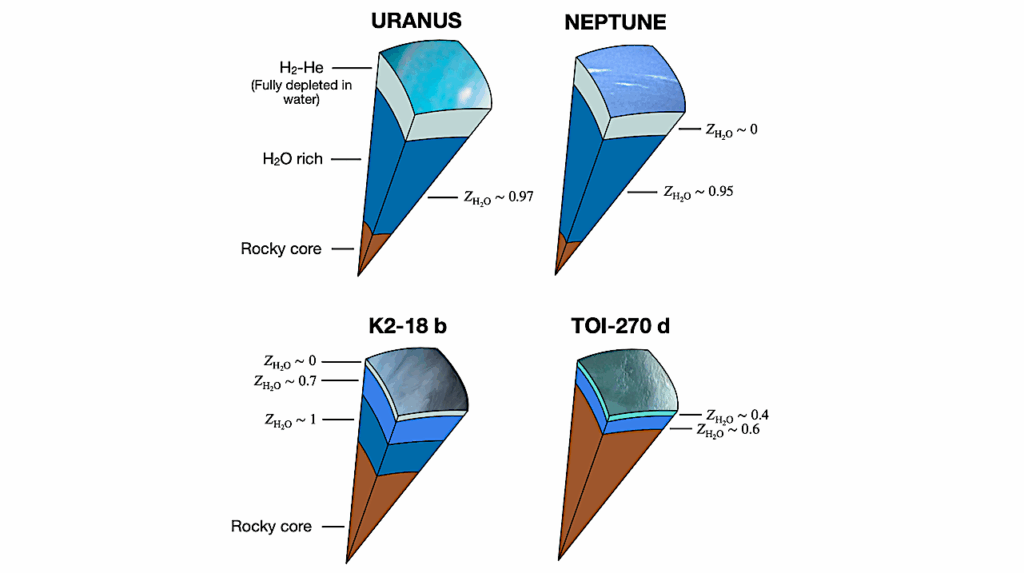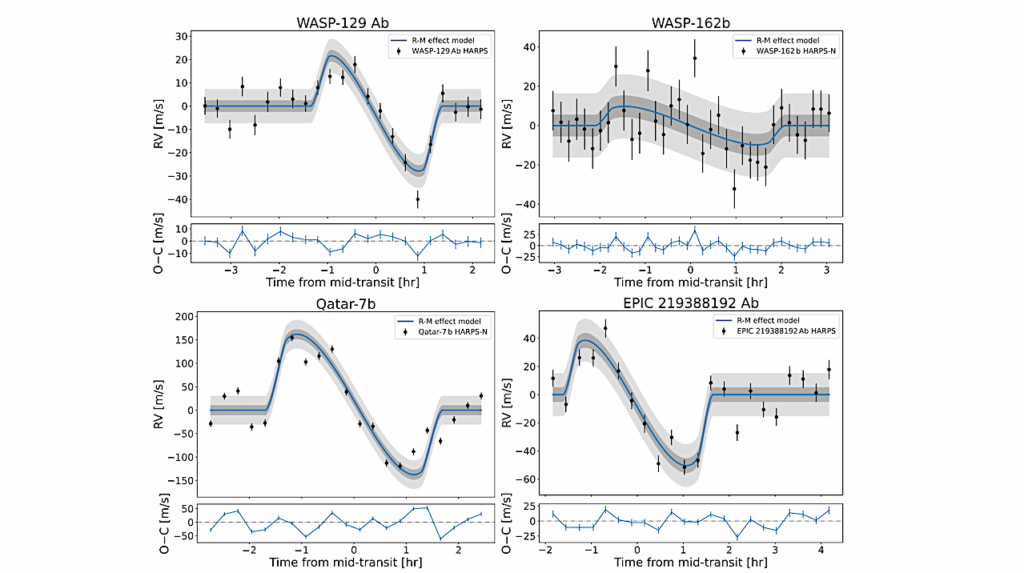Spectropolarimetric Characterisation Of Exoplanet Host Stars In Preparation Of The Ariel Mission II. The magnetised wind environment of TOI-1860, DS Tuc A, and HD 63433
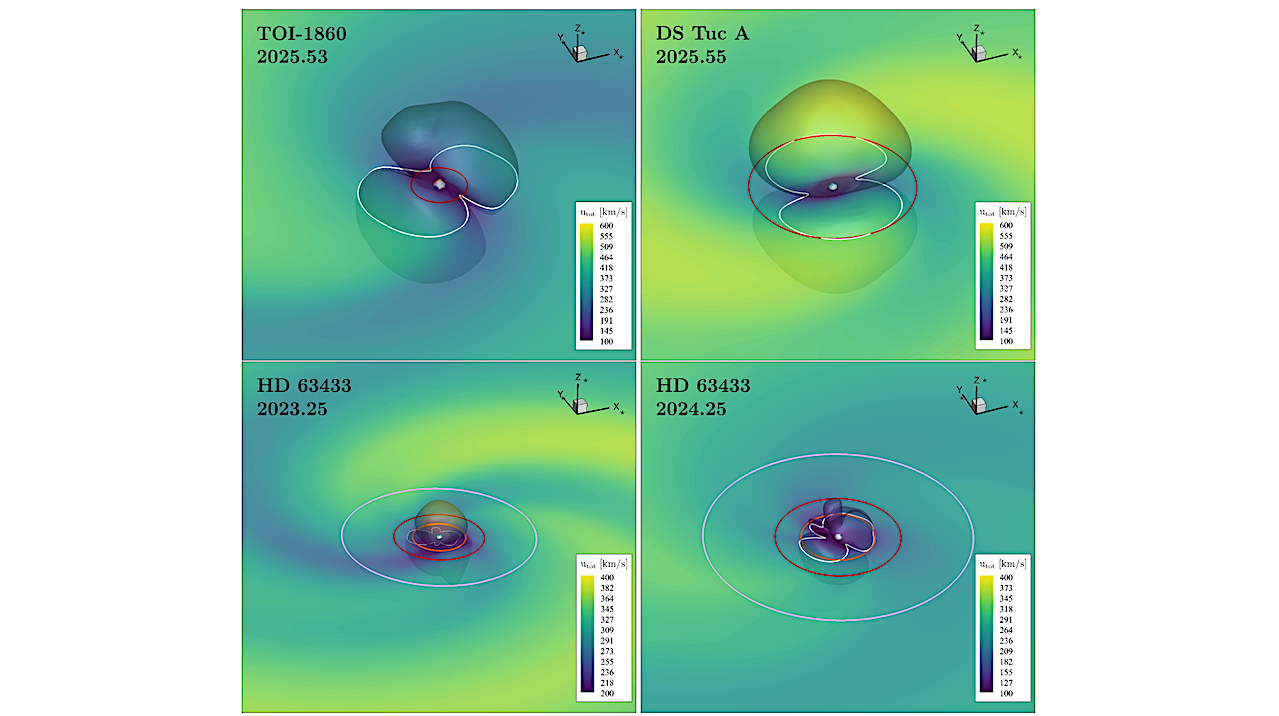
We update the status of the spectropolarimetric campaign dedicated to characterise the magnetic field properties of a sample of known exoplanet-hosting stars included in the current target list of the Ariel mission.
We analysed spectropolarimetric data collected for 15 G-M type stars with Neo-Narval, HARPSpol, and SPIRou to assess the detectability of the large-scale magnetic field. For three stars we reconstructed the magnetic field topology and its temporal evolution via Zeeman-Doppler imaging (ZDI). Such reconstructions were then used to perform 3D MHD simulations of the stellar wind and environment impinging on the hosted exoplanets. We detected the magnetic field of six stars.
Of these, we performed ZDI reconstructions for the first time of TOI-1860 and DS Tuc A, and for the second time of HD 63433, providing temporal information of its large-scale magnetic field. Consistently with previous results on young (∼50−100 Myr) solar-like stars, the large-scale magnetic field is moderately strong (30-60 G on average) and complex, with a significant fraction of magnetic energy in the toroidal component and high-order poloidal components.
We found the orbit of TOI-1860 b to be almost completely sub-Alfvénic, the orbits of DS Tuc A b and HD 63433 d to be trans-Alfvénic, and the orbits of HD 63433 b and c to be super-Alfvénic. We obtained marginal detections of the magnetic field for TOI-836 and TOI-2076, and detections for TOI-1136, but the number of observations is not sufficient for magnetic mapping.
A magnetic star-planet connection can occur for most of TOI-1860 b’s orbit. This can happen more sporadically for DS Tuc A b and HD 63433 c given the lower fraction of their orbit in the sub-Alfvénic regime. The orbit of HD 63433 c is nevertheless more sub-Alfvénic than previously simulated owing to the temporal evolution of the stellar magnetic field.
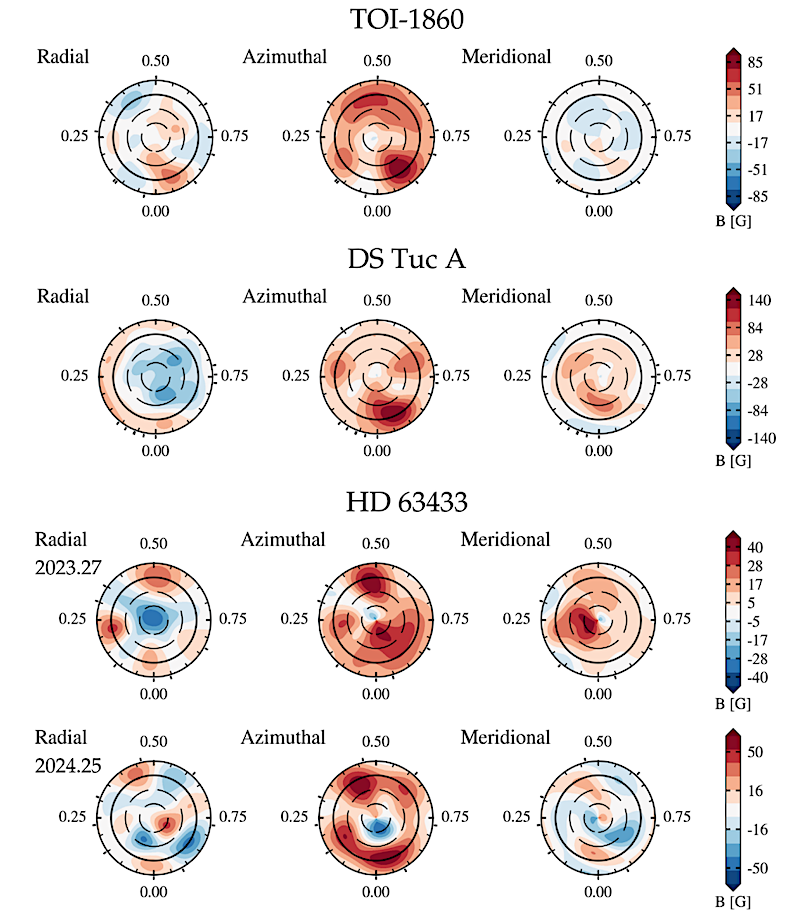
Reconstructed large-scale magnetic field maps of TOI-1860, DS Tuc A, and HD 63433 in flattened polar view. For completeness, we included our previous HD 63433 reconstruction using 2023 data (Bellotti et al. 2024). From the left, the radial, azimuthal, and meridional components of the magnetic field vector are illustrated. Concentric circles represent different stellar latitudes: -30 ◦ , +30 ◦ , and +60 ◦ (dashed lines), as well as the equator (solid line). The radial ticks are located at the rotational phases when the observations were collected. The rotational phases are computed with Eq. 3. The colour bar indicates the polarity and strength (in G) of the magnetic field. — astro-ph.SR
S. Bellotti, A. Lavail, D. Evensberget, A.A. Vidotto, C. Danielski, B. Edwards, G.A.J. Hussain, T. Lüftinger, J. Morin, P. Petit, S. Boro Saikia, G. Micela, A. López Ariste
Comments: 16 pages, 5 figures, 3 tables. Accepted for publication in A&A
Subjects: Solar and Stellar Astrophysics (astro-ph.SR); Earth and Planetary Astrophysics (astro-ph.EP)
Cite as: arXiv:2512.02708 [astro-ph.SR] (or arXiv:2512.02708v1 [astro-ph.SR] for this version)
https://doi.org/10.48550/arXiv.2512.02708
Focus to learn more
Submission history
From: Stefano Bellotti
[v1] Tue, 2 Dec 2025 12:40:43 UTC (4,498 KB)
https://arxiv.org/abs/2512.02708
Astrobiology,


